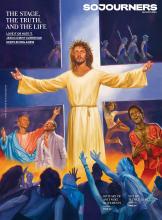Jan 12, 2010
Racial reconciliation among evangelicals is one of those slippery topics that come and go based on which national leader is currently jazzed about it.
Read the Full Article

Already a subscriber? Login

